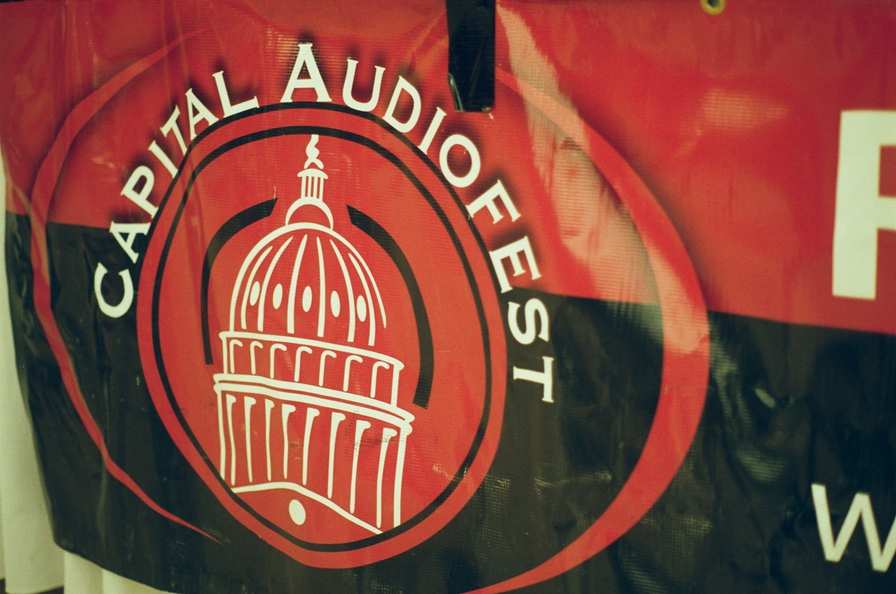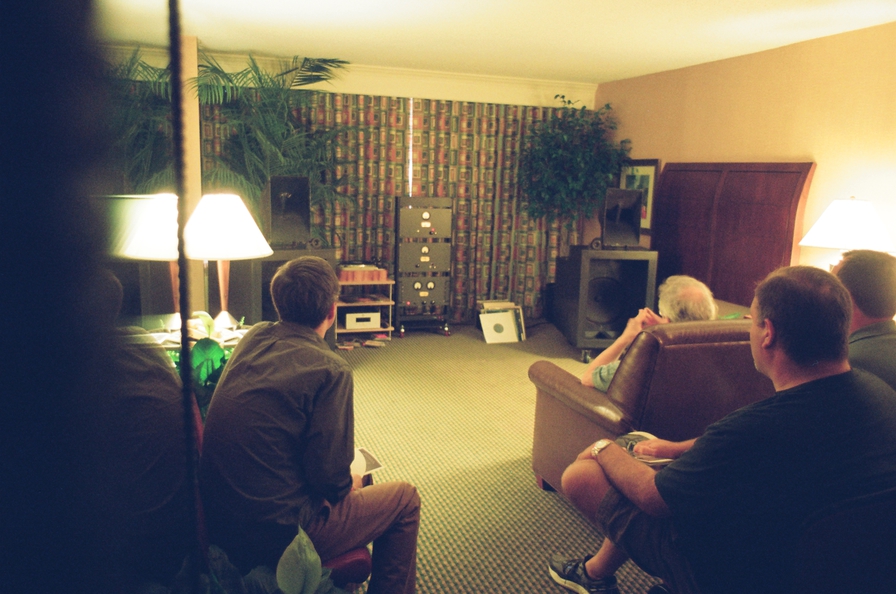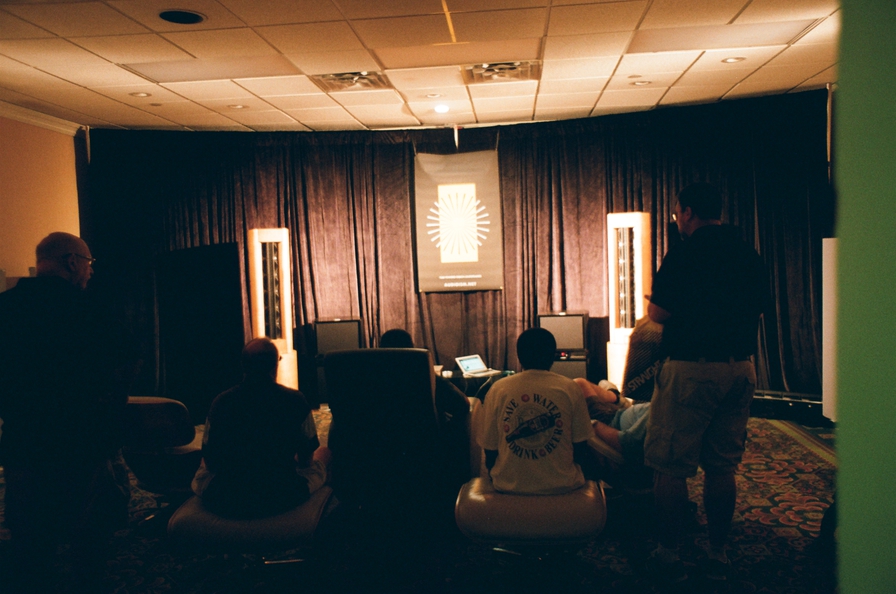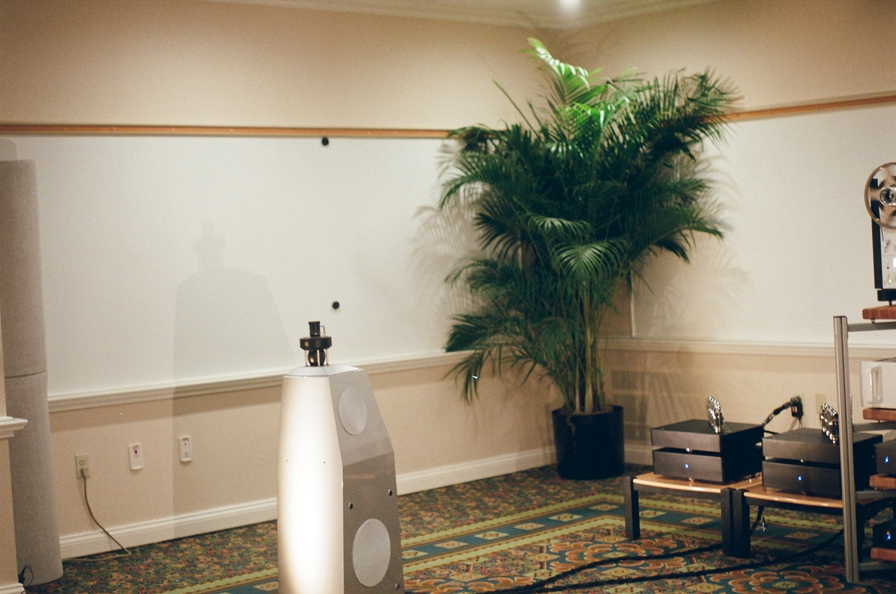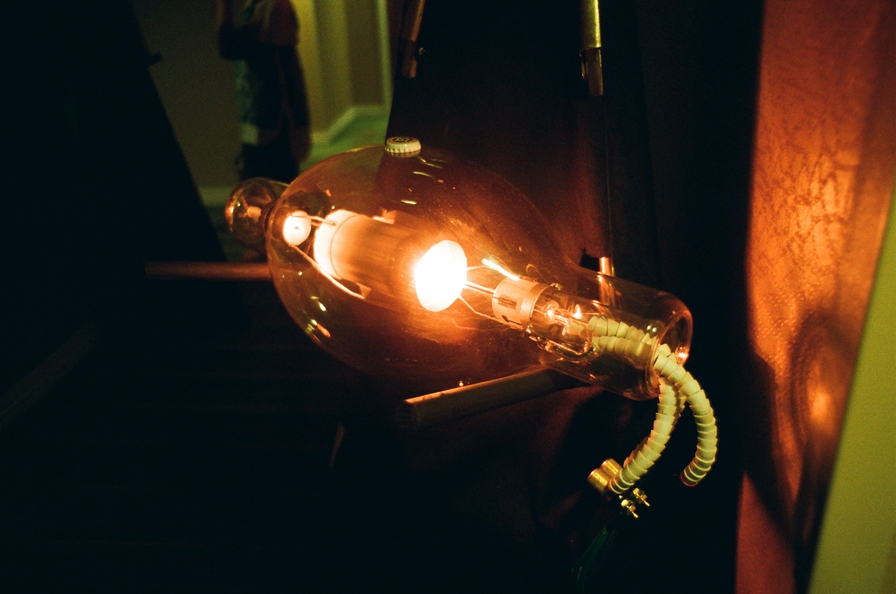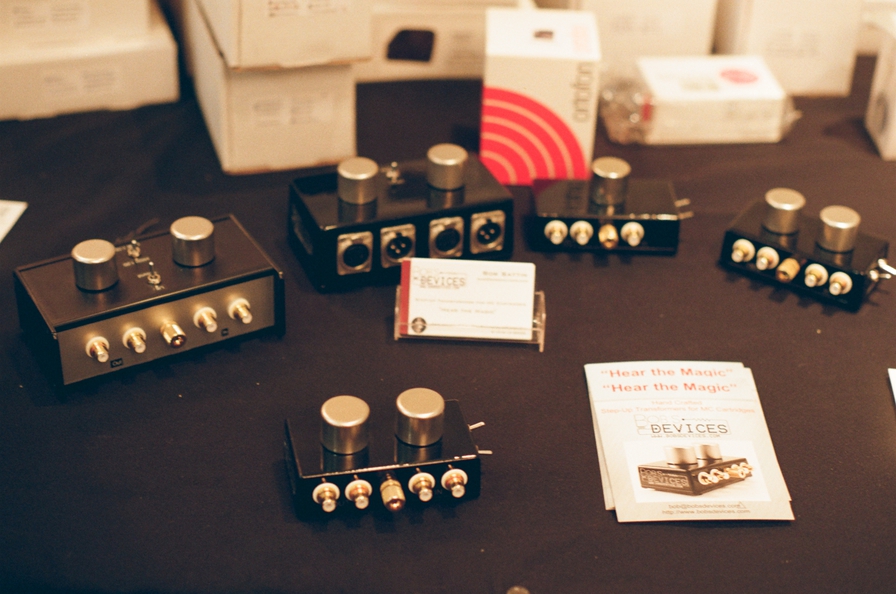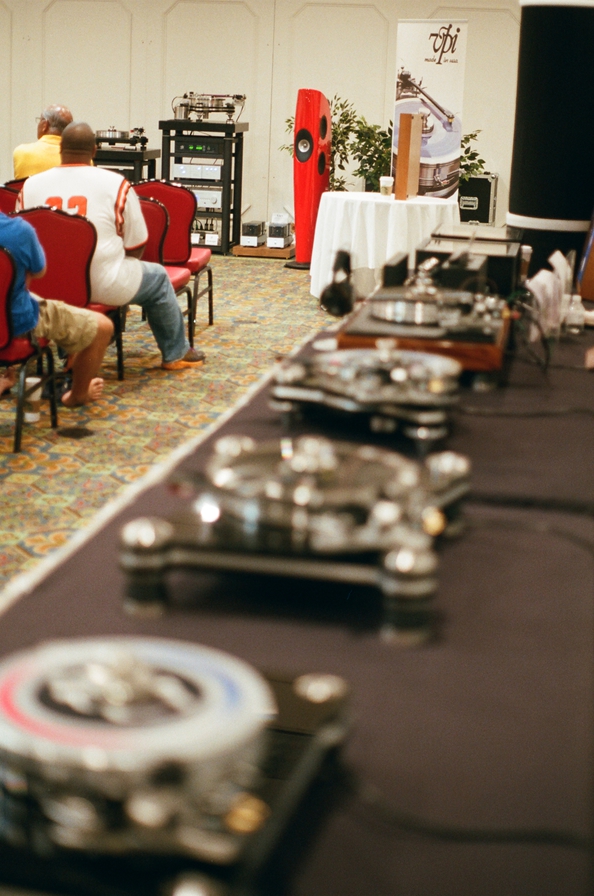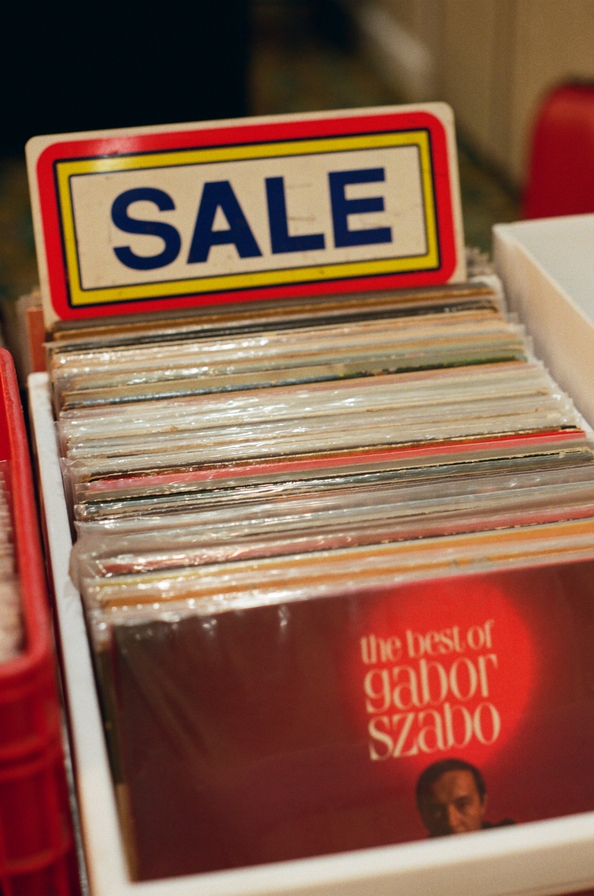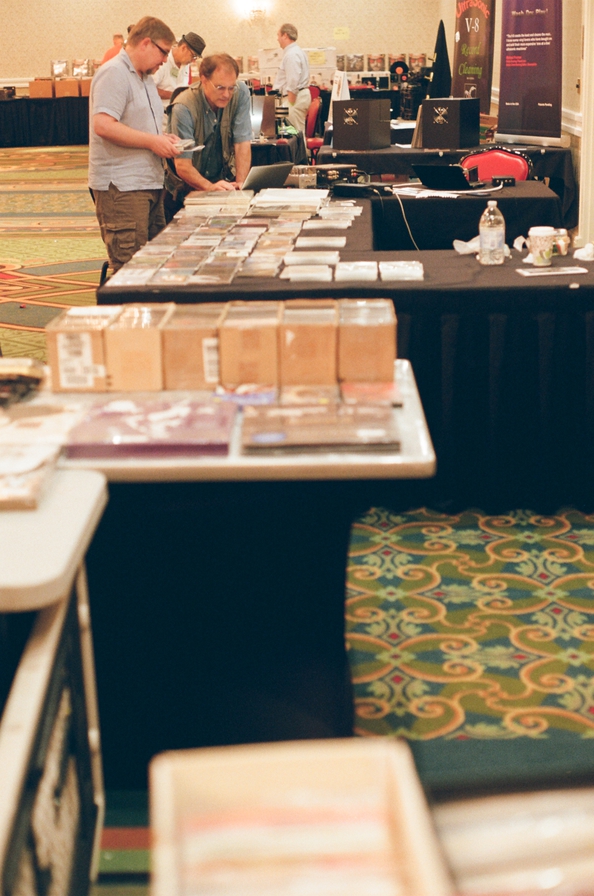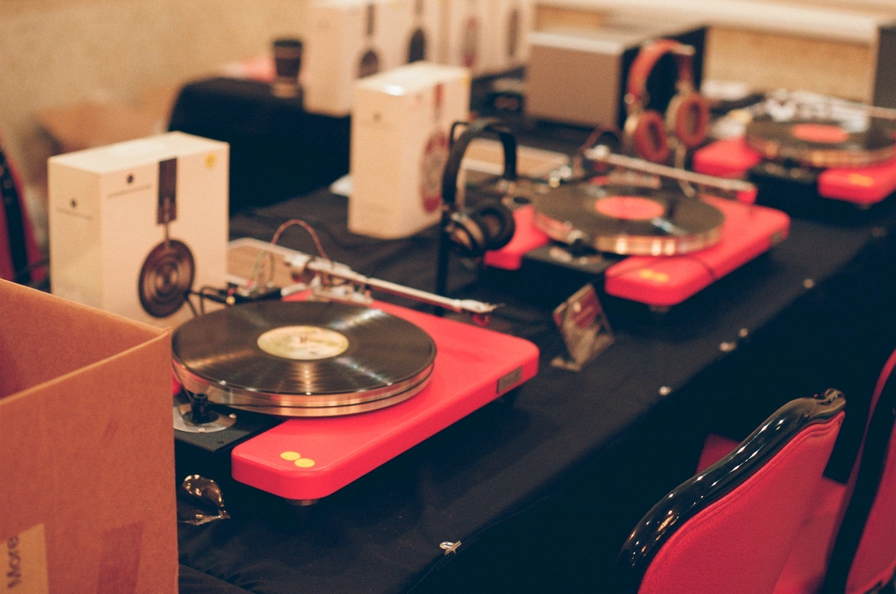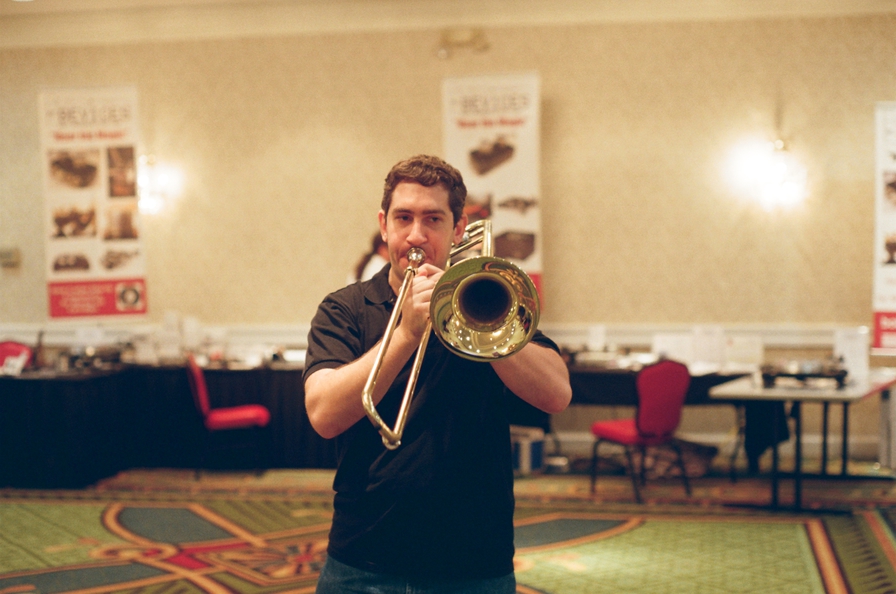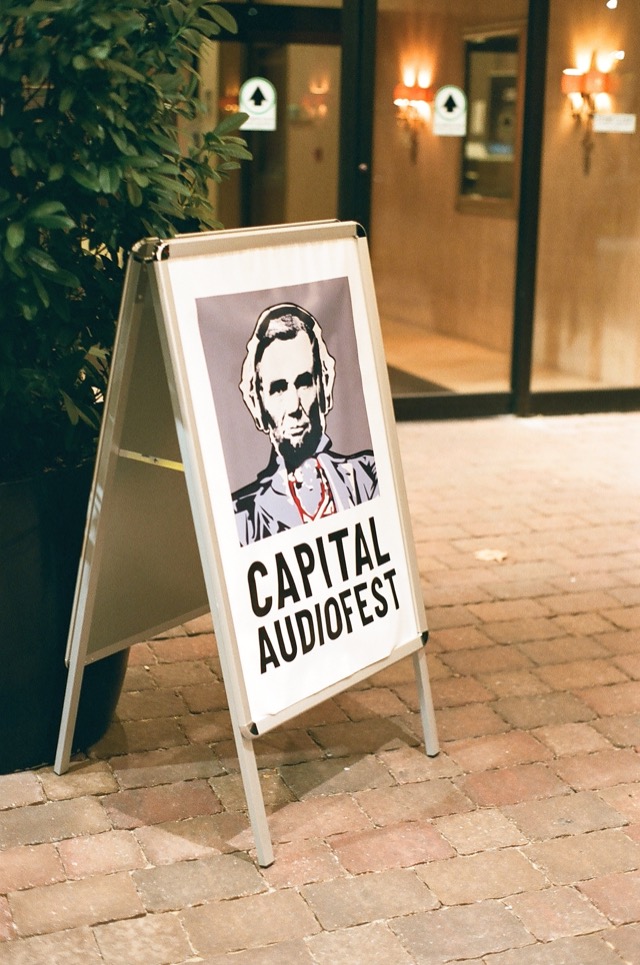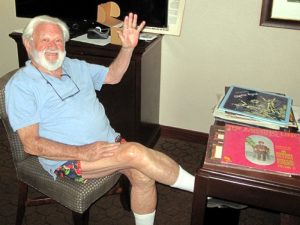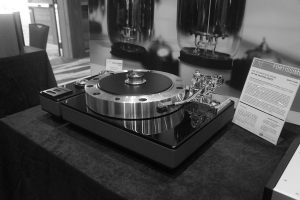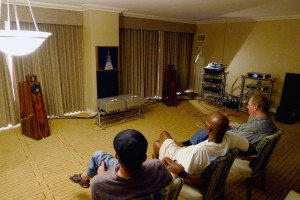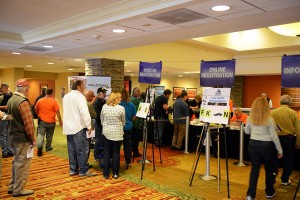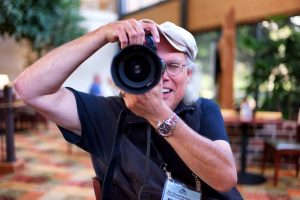Audio is about listening. All of the good things in the high end community come out of listening and thinking about what you listened to. All of the problems in the high end community can only be solved by listening and thinking about what you listened to.
There are very few places where people can actually sit down and listen to a wide variety of systems, one after the other, in close enough proximity that they can make any kind of comparison. One of those places, and certainly one of my favorite ones, is the Capitol Audiofest.
At the Audiofest you can sit down and listen to an electrostatic loudspeaker, then walk across the hall and hear a horn speaker in a similar room, then proceed to listen to a dozen different configurations. Maybe you thought you didn't like something, but at the Audiofest you might come across a variant of it that you like. Maybe you thought you loved something, but at the Audiofest become aware of the deficiencies in it.
This is why everybody, absolutely everybody, in the high end community should be at the Capitol Audiofest. No, it's not as big as some of the shows out there and there aren't as many systems to hear, but that small size means it is possible to actually sit down and talk to the people who design the systems and learn in a way that isn't possible at some of the bigger shows.
Now, this year's show moved to a new hotel, the Hilton Rockville, which is a place I am familiar with from working the East Coast Jazz Festival that once used it. It's much larger than last year's hotel, and maybe that makes the show seem smaller in comparison. If anything the room acoustics were even worse, but that's just the nature of having any event in a hotel.
Also, this year the show didn't have the headphone listening programming of last year, which was something I found fascinating. The headphone programming brought in a lot of younger people with a very different way of looking at audio and I didn't see those people this year unfortunately.
Still, what I did see was impressive.
I spent a day moving from room to room and listening to things, and it struck me that this year so many of the systems on display were just painfully bright. Maybe this is a new trend.
Amid all this, some of the most impressive sound I heard was in the Audio Note room. Audio Note makes gear with a very understated, classic British sound, and their demonstration of the ESPEHE loudspeakers was like listening to some of the best part of the vintage British speakers without any of the bad part. This isn't really the sound that I favor, but it was pleasant and such a great contrast to the almost universally bright and forward sound at the show that it was just a pleasure to listen to.
Harbeth was also showing off their Super HL5 Plus speaker, more or less in that same category but a little bit brighter and a little more detailed on the top but still with that classic British character.
And... I hate to say this... but I heard something I never thought I would hear in a million years: a speaker from Technics that sounded good. I thought Technics was very much out of place at a high end show and was kind of shocked when I saw the sign for their room. But the SB-C700 speakers they were showing off actually sounded very good, driven by their own power amp. These are pseudocoaxial designs with a dome tweeter mounted in the center of a flat woofer. The room was so terrible that it was hard to tell what was really going on with them (and for the demo they added some high end absorption on the side walls which really just emphasized the midrange problems in the room), but the speakers were detailed without being spitty or bright and would definitely be worth trying out under better listening conditions. I hope I don't have to turn in my union card for saying this.
Bill Hutchins from LKV Research was showing a new line stage to go along with the phono stage he's shown in previous years. It's all differential balanced electronics, with even the stepped attenuator ladder used for volume control being completely balanced. Very low or no feedback depending on how it's set up. Again a very simple design, but one that looks very well-made with a lot of attention spent on making as many components as non-critical as possible, and spending as much effort on those few critical components left. This is the sort of good design practice that I would love to see more of in the high end world.
A company called EMIA was making an odd powered loudspeaker. It was based on the Quad ESL panels, but in their own somewhat bulky frame, with their own amplifier built in. The amplifier used a single output transformer to step the signal up to the level that the Quad panels wanted, rather than having a step-down transformer in the amp and then a step-up in the speaker. The built quality was a little rough and the depth of the frame was a little worrisome, but for a prototype it was still impressive and it looks like a fair implementation of an excellent concept.
Kent McCollum of Electrostatic Solutions was there showing their rebuilding services for the Quad loudspeakers. Also, Robyatt Audio was showing off some supertweeters made by Enigma Acoustics, designed for use with the Quad loudspeakers. It was hard to tell in the rooms, but the idea is a good one if the radiation pattern can be matched reasonably well. Does the Quad really need a supertweeter? I don't know, but it definitely changed the character of them.
Martin-Logan was showing off their Montis loudspeakers, fairly small and a good match to the size rooms we're talking about. These are curved electrostatic speakers with a conventional cone woofer and there is some dsp involved in the woofer controller. I've always been a big fan of the Martin-Logan speakers, but what makes this different and new is the low end control, which is something you couldn't really tell much about in a boomy hotel room. But this is definitely a speaker I'd like to hear more of in a good room.
Joseph Audio speakers were showing up in a lot of rooms with a lot of the systems on display. I got to hear the Pearl3, which seemed bright and forward but maybe in a good way if that is your taste, and also their small Prism speaker. Now Listen Here did a very good demo of the entry level Prism which was bright but smooth and not spitty at all, certainly a great sounding speaker for the price. Some weird reflections in their room made it hard to judge imaging but that's how it goes in the hotel.
Alta Audio was showing their Lelantos, a three-way floorstanding speaker with a ribbon tweeter that sounded very clean and precise without being too forward. And, GT Audio Works was showing their GTA 2.5 speaker, a planar magnetic speaker with a ribbon tweeter and cone woofers, which sounded brighter to my ears than the GTA 2 that they showed two years back, but maybe that was just the room too. This was one of the few rooms where I could hear a really solid stereo image without trying to listen past the room slap.
Another interesting ribbon design was from Audioism, which was showing a system with a three foot long ribbon combined with an array of six midrange drivers stacked together, all driven by internal OTL amps from David Berning. This sort of design gives very narrow vertical dispersion which did a remarkable job of taming the bad hotel acoustics and throwing a good image in spite of the reflections from the concrete ceiling and floor. An unconventional design that could be a real problem-solver for helping deal with room issues.
United Home Audio had a booth where they had set up their Phase-12-PB-OPS, a 1/4" open-reel playback deck based on a Tascam transport with custom heads produced for UHA. According to Greg Beron, these are "very low output and low impedance heads." Once again, they had the MBL 116F Radialstrahler speakers, which are really incredibly clean-sounding speakers. Because these speakers are omnidirectional they had more of a problem than most in the terrible hotel room, but again this is really an ingenious design that would be wonderful to try out in a room with better acoustics.
If anything, that seemed to be the theme of the show... good sounding gear in bad sounding rooms. Very few of the vendors really tried to do much about the rooms unfortunately. Resolution Acoustics was showing off a number of acoustical products for room treatment which both looked aesthetically good and looked to be effective, although sadly they didn't have anything available to tame the out-of-control low end in their demo room. I suppose that isn't surprising since they are basically making products to make good rooms better, not products to deal with catastrophically bad rooms like we found in the hotel. Likewise GIK Acoustics had a line of really nice looking products including some bass traps, although there I didn't get much of an opportunity to see what they were doing. The same goes from ATS Acoustics which was showing baffles, bass traps, and panels. All of these companies are well worth looking into if you care about acoustical treatment of your listening room, and you should care about acoustical treatment of your listening room because it's the most important thing you can do to improve your sound.
There were a bunch of new amplifiers at the show this year and it seemed like the OTL designs were making a real comeback, which is a good thing to my mind. I heard the Miyajima Labs OTL 2010 amplifiers which use a set of eight 5080 regulator tubes and sounded great.
And, of course there were the David Berning amplifiers that were being demonstrated by Audioism both in their speakers and as standalone devices. OTL designs made with multiple EL84 output tubes, which you don't think of as high current devices but which actually are a good choice for the application.
Plenty of folks were also showing conventional tube amplifiers, like Synthesis, an Italian company that was showing a number of very well-made power amps and integrated amps. Conventional, solid EL34 and KT-88 based designs. Border Patrol was showing a wide variety of different power amplifiers of different topologies and different sounds with the ability to audition several to compare them yourself.
Planter Speakers was showing off the "Piermont," a loudspeaker mounted in a teak planter. Very stylish looking, it had a little diffraction issue from the slats in the planter but it was voiced quite well to be listened to either sitting or standing with the planter on the ground; that is the tweeter dispersion was pretty well-tailored for the application. These didn't sound like high-end studio monitors, but considering that they are planters they sounded pretty remarkable. If you need to conceal speakers either indoors or out, these things sound a thousand times better than the speakers concealed in rocks, the tiny 2-way systems from those guys in Boston, or any of the other concealable systems I have heard. And you can put a lime tree in them and have something to eat too.
Kanso Audio Furniture was selling a really nice-looking range of stands, racks, and supports including some supported turntable platforms. Very solidly made, very good build quality.
The Voice That Is was showing off the music streamers from Aurender. These are standalone media storage devices that can hold your digital music files and play them back on demand without the need to dedicate a computer or the added maintenance and reliability headaches of having a computer doing the job. As physical media disappear (and I continue to be surprised at how much it does so; many of the vendors at the show were unable to play back CDs), more and more devices like this become important and the fidelity and design of them are paramount.
In the very weird range, Sound Insight was showing off an open dipole subwoofer. These are servo-controlled devices with open baffles, so they aren't dependent on the resonant frequency of either the driver or a box. In theory this can make it possible to get very low frequencies from them although at levels limited by the driver excursion. The designers claim the radiation pattern makes them less sensitive to room modes, and I can't say whether that is really the case but they did seem to have less trouble with the terrible nearly-square hotel room bass irregularities than most of the systems at the show. Again a system definitely worth investigating further.
Vinnie Rossi had an interesting modular hi-fi system. One box, and it could be a preamp, with or without a phono preamp, with or without a DAC, with or without a power amp stage. Lots of little modules that you could swap in or out as needed, so you pay for only what you need and if you need something else later you buy it. Interestingly, they are powering it from ultracapacitors, so no need for clean AC power or worries about safety grounds causing loops, but also no need to worry about battery failures. I didn't get a chance to see this in much detail but it's an interesting idea.
It did seem that the big new thing this year was mono, with a lot of people demonstrating mono cartridges from Miyajima anf from Ortofon. It's not a bad idea if you play older mono records, either, since the mono cartridge can be made very stiff in the vertical plane for ever so slightly lower distortion than you'd get from a stereo cartridge on a mono record.
Bob's Devices was showing off a line of step-up transformer modules for moving coil phono cartridges. They had Cinemag transformers installed in convenient little diecast boxes for easy setup with any turntable.
Ultrasonic Records was back again this year with their ingenious ultrasonic record cleaners. These aren't a substitute for vacuum machines to my mind, but they do an amazing job getting out deep dirt from filthy records that you wouldn't want anywhere near your vacuum machine. I have a commercial ultrasonic machine that has been a lifesaver for dealing with yard sale finds, and this machine is a lot faster and more convenient.
Triplanar was showing some beautifully-made tonearms, both their Mk VII and the U12, both conventional gimbal-bearing types, constructed like the precision instruments that tonearms should be.
And, of course, VPI had a room set up where you could audition different turntables and compare them, with their records or with your own. The differences between some of these machines is very subtle so I'd like to applaud Mat Weisfeld from VPI to making it possible to make these sorts of comparisons.
Two companies really stand out this year as far as making replicas of older horn designs. Volti was demonstrating a beautifully-made replica of the Klipsch La Scala II, and Classic Audio Reproduction was showing both a very well-made replica of the JBL Hartsfield design and also a newer horn design (the T-1.5) which had much of the classic horn sound. These speakers aren't really to my tastes, but I know a lot of people are huge fans of them and I can attest that both of these companies are doing beautiful work at recreating both the look and the sound of the originals.
There was a room of used and new record vendors, including Orto Records from Baltimore, Clarion Records Online, with a great selection of used record, and SoundStageDirect.com. The only actual record label there that I saw was Todd Garfinkle's M-A Recordings, who make some really top-notch minimalist recordings. They had some big news in that they were now selling LPs, and their great album Nublado is now out on vinyl pressed from a high resolution master.
Two audio groups deserve some mention here. First of all, the DCAudioDIY club had a room this year (which I missed a lot last year). These folks brought in a number of projects from members including some really ingenious absorber panels with photo printing that would blend in well with any decor. It was a good place just to sit down and talk with people about audio, and while the sound quality in the room wasn't as good as some of the other rooms this year, the discussion quality was the best.
In addition, the Mid-Atlantic Antique Radio Club had a small table. These are antique radio people who are also bringing in other vintage electronics collectors and who are encouraging crossover between people collecting radio gear and older audio gear.
Clubs like these two are really the backbone of the audio community to my mind, because they get people together to listen. When was the last time you went over to someone's house to listen to records? These guys have regular meetings to do just that, or to set up visits to do that, and that is what the hobby is all about.
The audio press was out in full force, and a number of magazines were being given out at the front registration, not only just the Voice Coil and AudioXPress of previous years but also Stereophile and TAS (although the TAS copies had run out by the time I got there in mid-Saturday).
There were also a number of talks being given in the Speakers Corner, including what promised to be a great one from Matthew Barton at the Library of Congress about the sound recording collection there, a turntable clinic from Mat Weisfeld from VPI, and some great other ones, all of which I was sad to have missed. I've heard these guys speak before and they are good.
I heard a lot of people complaining that the show was smaller this year, but to be honest I spent a day going from room to room and I didn't see more than a fraction of what was there. I'm sure that for every product I mention in this article, there is at least one that I would have been interested in if I'd had time to see it.
Be aware that although many of the rooms were set up by manufacturers, most of them were set up by dealers that sold the products, and if I didn't mention many of the dealers here in this article it's very much my own fault since I was so rushed I spent much of my time just trying to figure out what I was listening to sometimes. Many, many thanks to the dealers as well as the manufacturers since these are the people who make events like this happen.




